The Bauhaus movement, with its trailblazing vision of combining form and function, has left a lasting impact on the world of design, particularly in the creation of chairs that are as much sculptures as they are functional pieces of furniture. Here we celebrate some of the most iconic chairs that were born from the Bauhaus ethos or influenced by its principles.
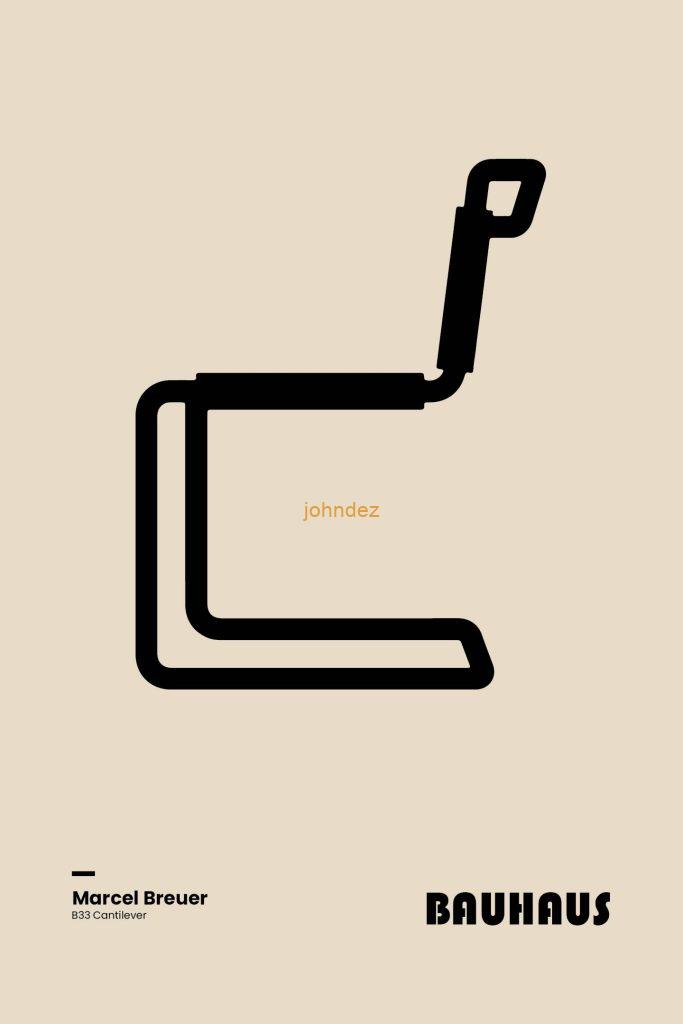
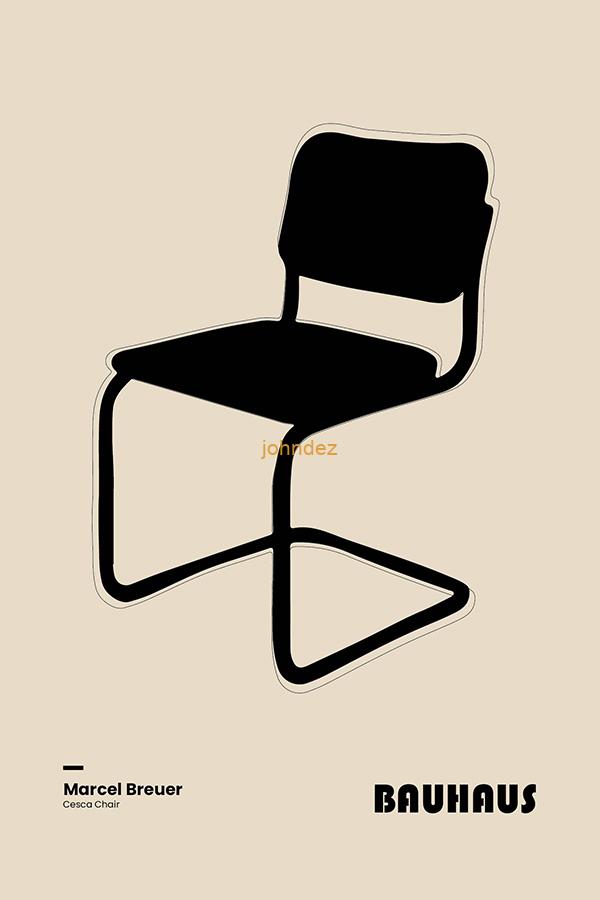
Marcel Breuer, a Hungarian-born modernist, industrial designer, and architect was a prolific figure at the Bauhaus and later in modern furniture design. His B33 Chair, a masterpiece of minimalism and comfort, showcases the innovative use of tubular steel that became synonymous with the Bauhaus aesthetic. Following the B33, Breuer designed the Cesca Chair, which merged the industrial edge of chromed steel with the warmth of beechwood and caning. Its cantilevered form represents a departure from traditional chair legs, offering a floating sensation that was revolutionary for its time.
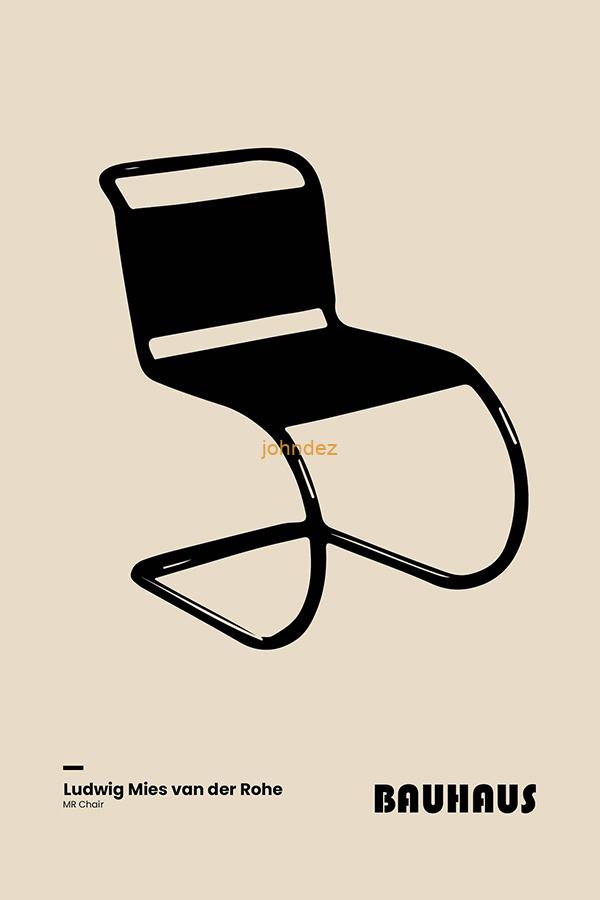
The MR Chair by Ludwig Mies van der Rohe further exemplifies the embrace of tubular steel, combining structural clarity with a luxurious leather seat. This chair demonstrates Mies van der Rohe’s “less is more” approach, stripping design down to its essential elements and highlighting the chair’s materials and form.
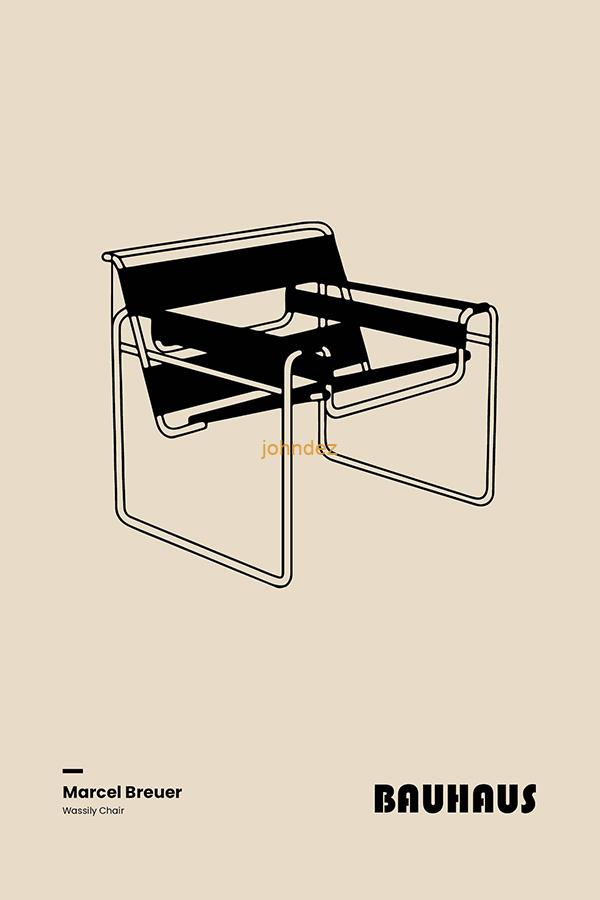
Breuer’s Wassily Chair, perhaps one of the most recognizable pieces of 20th-century furniture, was inspired by the frame of a bicycle. It is a symphony of lines and planes, with leather straps that provide a surprisingly comfortable seat. Originally designed for Wassily Kandinsky, the chair embodies the Bauhaus’s commitment to functional, simple designs that serve the needs of modern society.
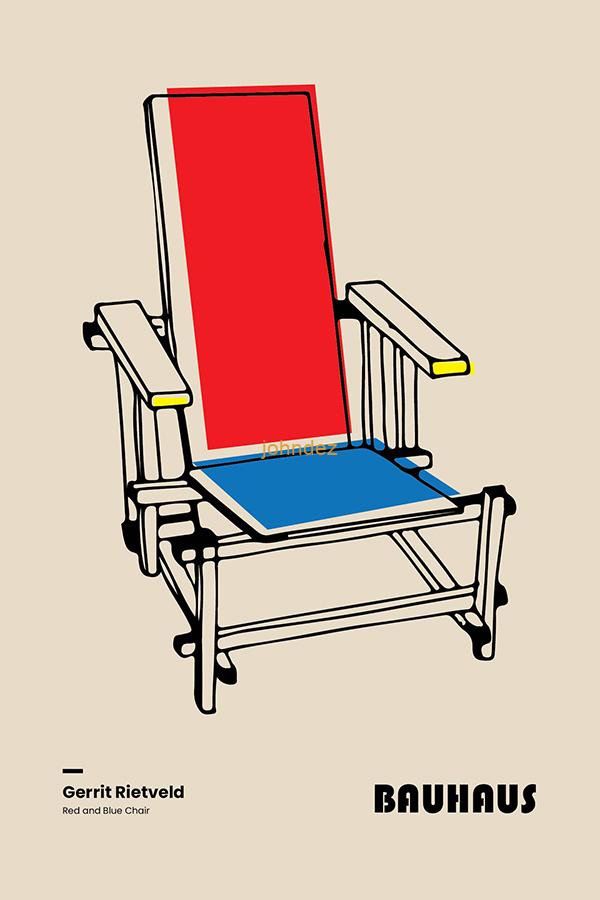
From the Dutch De Stijl movement, Gerrit Rietveld’s Red and Blue Chair is a striking composition in primary colors and geometric form. Although not a product of the Bauhaus, it shares the movement’s fundamental principles of functionality and simplicity. The chair is more than seating; it is a piece of abstract art meant to stimulate the senses and challenge traditional furniture design.
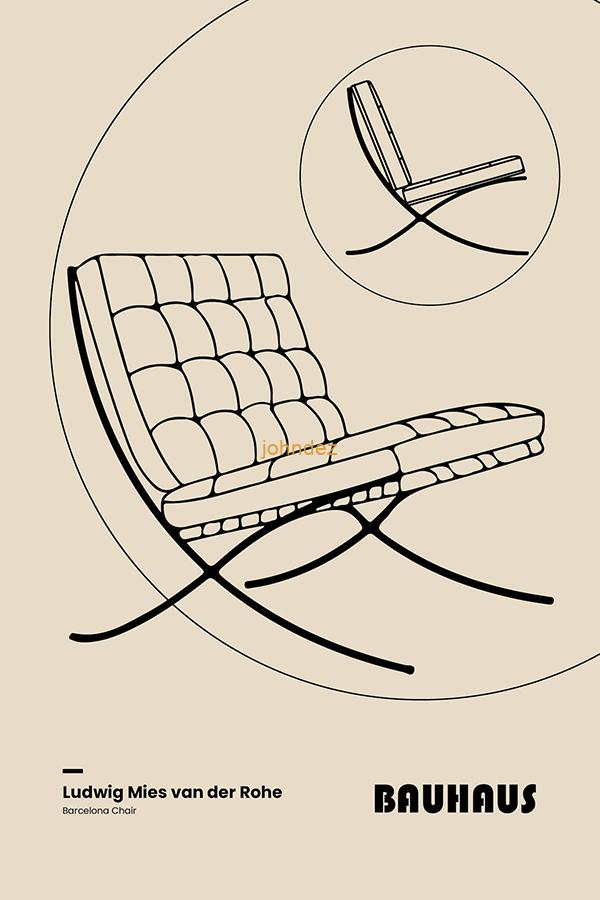
Continuing with the theme of iconic seating, Ludwig Mies van der Rohe’s Barcelona Chair was designed for the German Pavilion at the 1929 International Exposition in Barcelona. It is a throne of modernity, combining luxurious leather with a sleek stainless steel frame. Its design conveys a sense of elegance and status, yet adheres to the functionality and clean lines revered by the Bauhaus.

Stepping outside the Bauhaus lineage but influenced by its functionalist ideology, the LC4 Chair by Le Corbusier, also known as the “relaxing machine,” is a perfect blend of ergonomic design and style. Its form follows the natural curve of the body, resting on a frame that allows for a variable resting position.
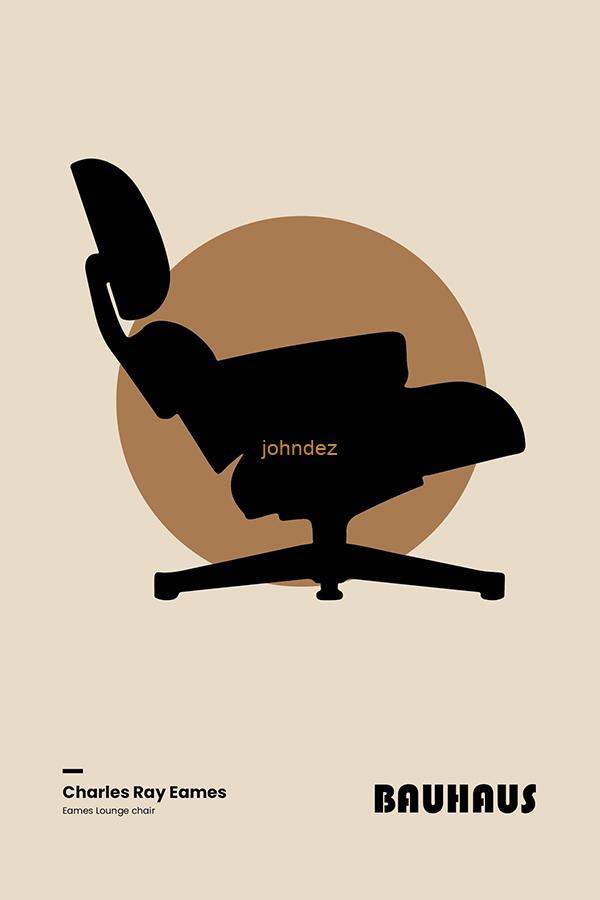
Lastly, the Eames Lounge Chair by Charles and Ray Eames, though post-Bauhaus, carries forward the movement’s legacy through its design integrity and innovation. The chair, with its molded plywood and leather cushions, offers a retreat of comfort and craftsmanship, highlighting the Eames’ dedication to improving the human experience through design.
These chairs are not merely objects to sit upon; they are milestones in the history of design. Each piece serves as a narrative of the era it was created, reflecting the philosophies of its creators and the aesthetic currents of the time. They continue to be celebrated for their beauty and functionality, standing as testaments to the enduring influence of the Bauhaus movement and its modernist contemporaries.
Dive Deeper…
Exploring the Legacy of the Bauhaus School of Design
Bauhaus Design Philosophy: Bridging Function and Aesthetics
Key Figures of the Bauhaus: Pioneers of Modern Design
The Bauhaus and Its Revolutionary Impact on Industrial Design
The Bauhaus Influence in Art and Architecture: A Legacy of Minimalism and Functionality
Bauhaus Legacy and Modern Interpretations: Timeless Influence in Design
The Timeless Chairs of the Bauhaus Movement and Beyond
Whimsical Chronicles of Gin & Brain... In the grand tapestry of design, where form cuddles up with function, and metal meets leather in a modernist tango, what do we say to those stuck in the armchair of tradition, Gin?" "We tell 'em, Brain, that sitting still is for statues! Time to swivel in style and recline into the future, one groundbreaking chair at a time!" "And if the purists raise an eyebrow?" Gin inquires with a smirk. "Then we crank up 'Pump Up the Jam' and lounge like it’s a Bauhaus bash, right, Mrs. Cunk?" Brain declares with a nod. "After all, every seat has a story, and we're just here to turn the page to the next chapter of cheeky comfort!
